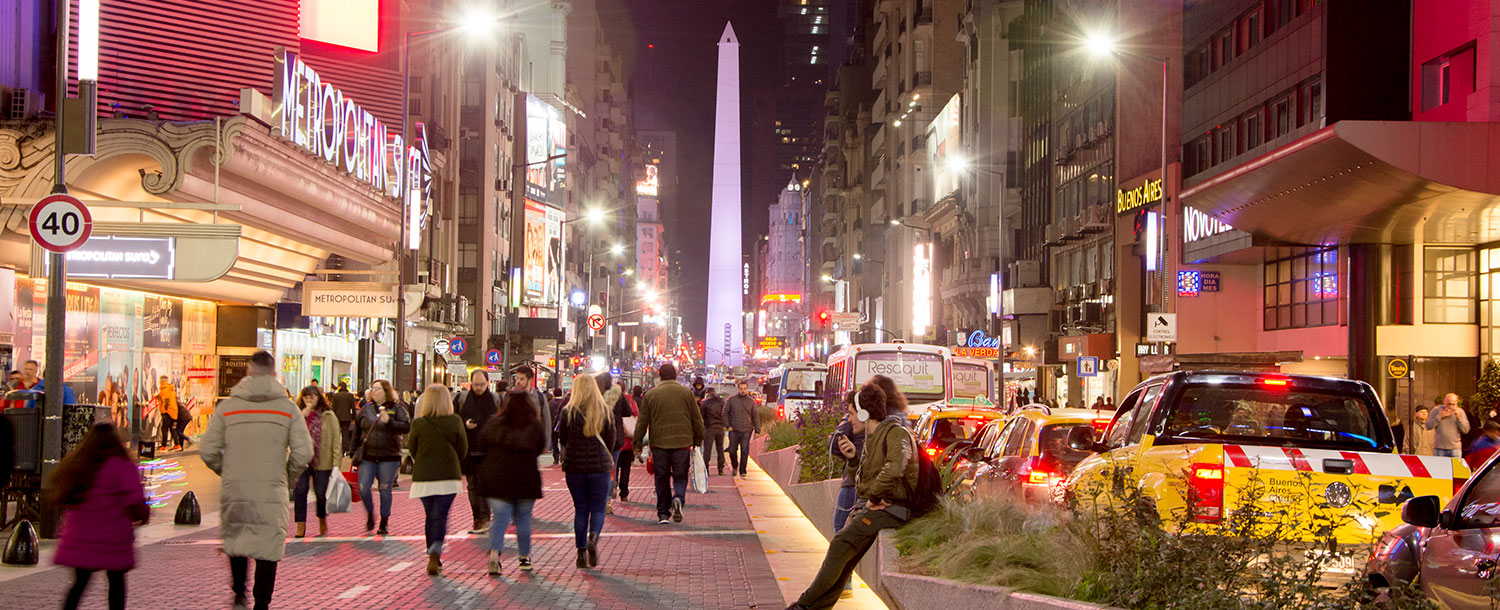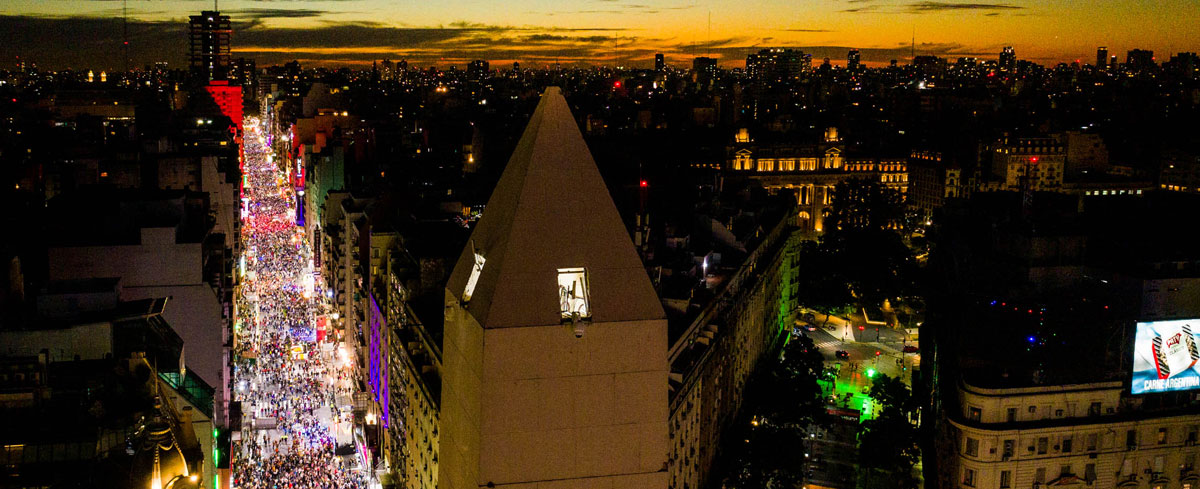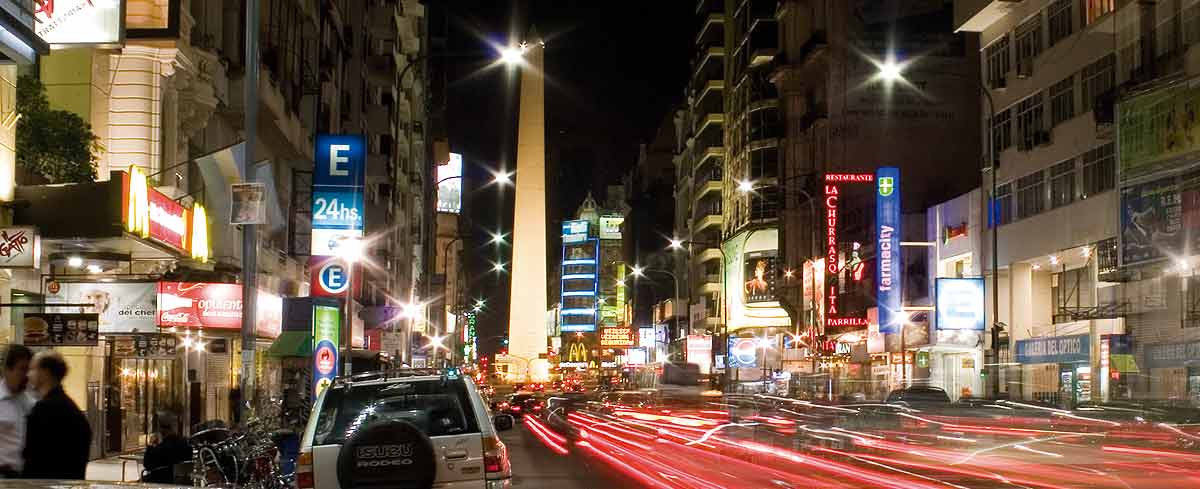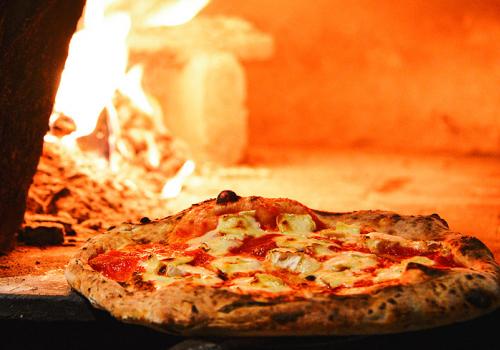Calle Corrientes
Present in tours
Buenos Aires’ open-air cultural centre
Corrientes is one of the most famous streets in Buenos Aires, and one of great cultural importance owing to its many theatres, which witnessed the golden age of tango in the 1930s and 40s. The avenue starts in the neighbourhood of Puerto Madero and over 70 blocks runs all the way through San Nicolás, Balvanera, Almagro and Villa Crespo to end in Chacarita.
The street has long been called Avenida Corrientes (Corrientes Avenue) officially, but many people still call it Calle Corrientes (Corrientes Street). It’s named after the city of Corrientes, which was the first city outside of Buenos Aires to support Argentina’s independence. Since April 2019, the street is pedestrianised at night (from 7pm until 2am, the main hours for visiting the theatres) from its junction with Avenida Callao to Calle Libertad.
Avenida Corrientes became known as "the street that never sleeps" because of its busy nightlife, with many theatres, pizza joints, historic cafes and bars, and bookstores that open late into the evening in the blocks nearest to the obelisk (at the junction of 9 de Julio). The street had great importance during the golden age of tango, when the great musicians of the period would meet and play at its bars and theatres.
Corrientes is the bohemia of the 1940s. It’s Carlos Gardel, tango and nightlife. It’s also the Corrientes of the 1960s and the start of the 1970s, with its political, cultural and literary debates in the bars and cafes on the main corners. It’s the Corrientes of art house cinemas, bookstores that close late, and pizzerias that close even later, the Teatro San Martín, the Lugones cinema, and the Rojas cultural centre, where the avenue saw the reinvention of the city’s contemporary arts scene in the 1990s. It’s kiosks selling all the main cultural magazines, and it’s theatres and billboards that light up the faces of passersby.
"Pizzerías" at calle Corrientes
Pizza from Buenos Aires is… the Porteño pizza. We imported from the Genoese and for some time we respected its essence, but over the years, we learned to adapt it to our taste. We put cheese until it overflows and the same abundance criterion applies to the rest of the ingredients: tomato sauce, ham, bell peppers, onions, vegetables and any other touch you prefer. Have we tempted you a little? Come to Calle Corrientes, where the first slice of pizza is the beginning of a memorable night.
The theatres of the new Calle Corrientes
In 1936 it was decided to expand calle Corrientes and the rest is history. Dramas and comedies. Individual plays or with a cast that don’t go on stage at the same time. Grand spectacles and plays from the underground scene. The iconic Avenue (although in our hearts continues to be a "calle") offers, without any exaggeration, artistic and cultural alternatives all the time.
Night of the Bookstores
Every year, usually in December, Avenida Corrientes hosts the “La Noche de las Librerías”, or Night of the Bookstores, when the many book shops on the street open even later than normal into the early hours, hosting talks and book launches and special promotions.
Visit Buenos Aires’ most emblematic neighbourhoods.






